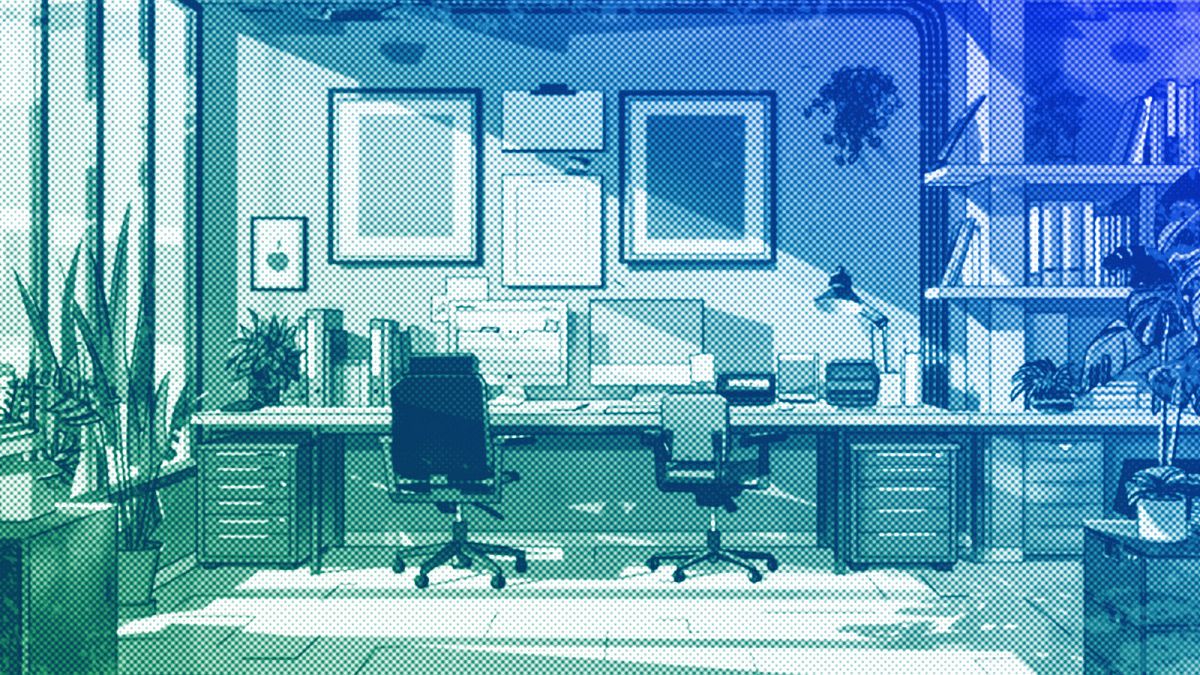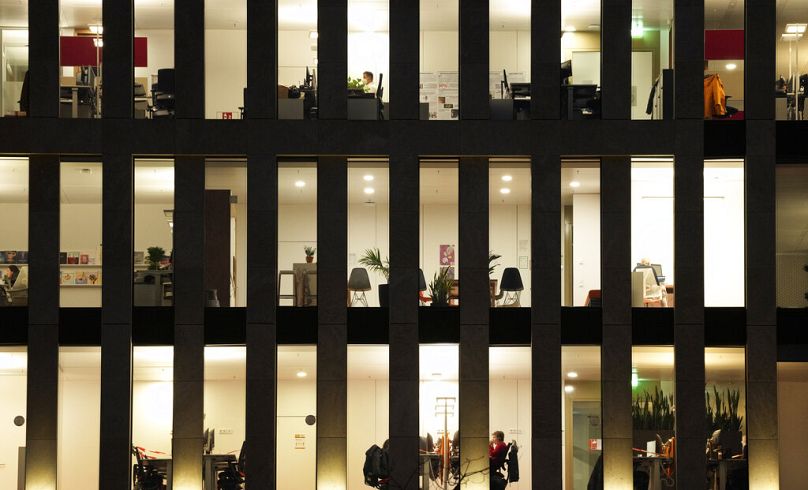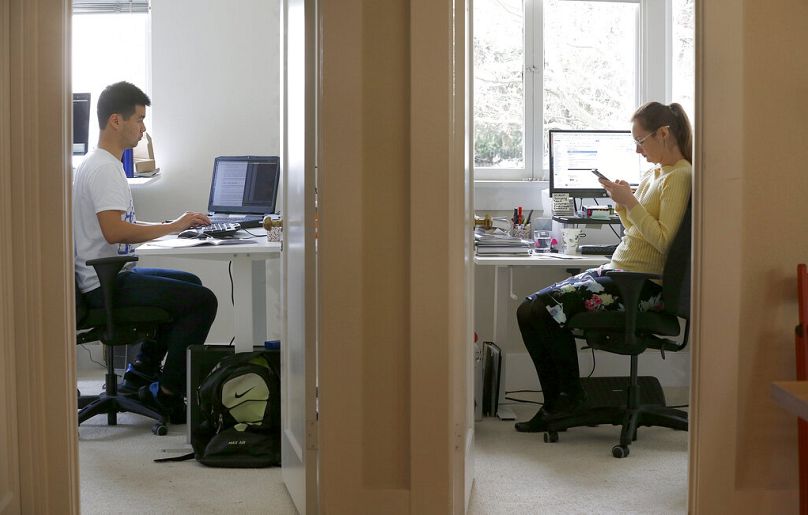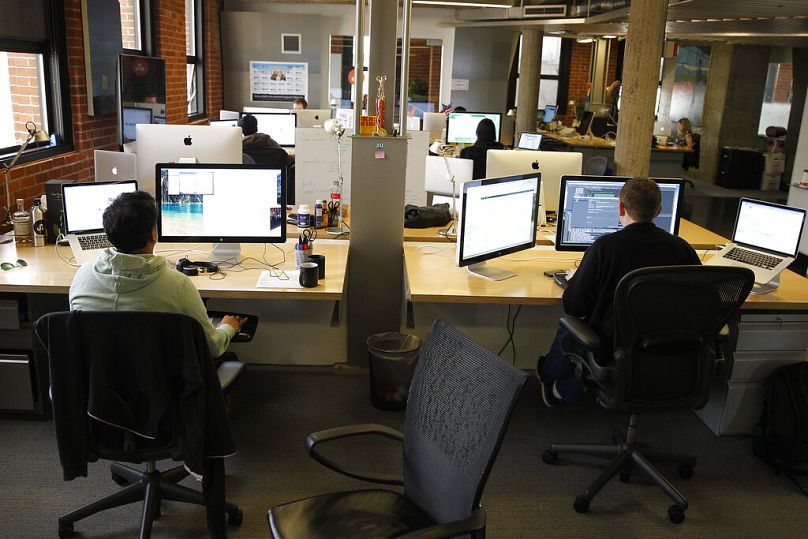The most effective RTO policy is to make working at the office feel more like working from home, Samu Hällfors writes.
As more and more firms enact strict Return-to-Office mandates, the ultimate costs of these new policies are coming to light. Forcing employees back to the office is, in most companies, creating an exodus of talent.
Employees are standing their ground: dating app Grindr saw nearly half of its workforce quit after the company mandated that all workers return to the office twice a week.
Employers are staying firm: Amazon’s leadership recently hinted that workers who don’t agree with its new RTO policy will soon have to leave the firm.
It’s reasonable why employers would want employees to return to the office on at least some days of the week. Offices, at their best, promote collaboration and communication, as seen with the Allen Curve.
But it’s just as understandable why many employees would not want to return to in-person work. Offices, at their worst, disrupt focus and make it harder to get things done.
You can get people to return to the office — and willingly so
The solution isn’t more RTO mandates. What employers need instead is to strike a deal: to make the employees an office they can’t refuse.
A broad study from Leesman found that the average home supports the average worker better than many offices can.
Employees need quiet, privacy, and focus to be able to do their jobs well — and most offices still lack these considerations.
That needs to change. The employers that are going to win in the new age of hybrid work — and attract and retain the best talent — are the ones who make the office a worthwhile experience for their employees.
And that means making working at the office more like — and even better than — working from home.
Here are three ways we’ve achieved that at our company. By implementing these three steps, we’ve seen our offices fuller now than they were before the pandemic — all without any RTO mandates.
Cut distracting noise
Most offices — open-plan ones in particular — are far too noisy. Distracting noise kills productivity and makes employees not want to come in.
Yet it is only recently that acoustics have begun to appropriately factor into office redesigns.
Dissatisfaction with distraction from noise has the strongest correlation to an employee saying that the design of their workplace does not support their personal productivity.
Only 36% of workers in a recent poll said they were satisfied with the noise levels at their office.
Companies should not burden their employees with the complicated task of blocking out distracting noise. AirPods can only do so much (and can’t serve multiple people working together).
To get employees excited about working at the office, employers must invest in real high-quality sound insulation and masking, and add areas to the office that provide workers with complete silence.
Amp up privacy
While it can be conducive to collaboration to overhear in-office conversations or take a quick peek at a colleague’s screen, countless tasks at work also require full privacy.
Conference rooms help provide that for meetings of two or more people. But in most offices, there are no private quarters for individual work.
Access to privacy is a powerful predictor of individual employees’ satisfaction with their office space. The offices that fare best provide optimal conditions for both privacy and communication.
Employees shouldn’t need to cover their desktop screens with privacy protectors to finish important tasks.
In offices designed for truly effective hybrid work, these employees can simply move over to a private space to finalise the task or take an important call.
Prioritise focused work
Collaboration is crucial for companies’ success, and it’s something that working on-site at the office helps foster. But, ultimately, the foundation of all successful collaboration is also individual-focused work.
Few employees can be fully collaborative for the entirety of a workday. Employees need time and space away from their colleagues to think, create, and make individual progress on projects — all without distractions.
That focus then helps fuel further collaboration with teams.
Offices must offer spaces that are both private and quiet, just like when working from home.
And just as crucially, employers must let employees design their office workdays in ways that allow for that individual focus work to actually take place.
Hybrid working has revolutionised how we come together and work. The office still has a long way to go in meeting that new reality.
It’s now up to employers to fix the disconnect; and that starts, not by forcing employees back to the office, but by listening and responding to their needs.
Indeed, it’s not the fault of workers that offices aren’t up to par with modern work; it’s the fault of offices.
Samu Hällfors is the CEO of Framery.
At Euronews, we believe all views matter. Contact us at view@euronews.com to send pitches or submissions and be part of the conversation.






